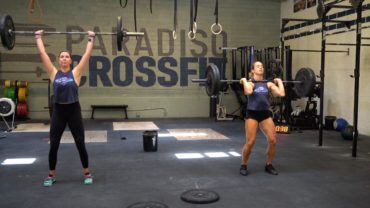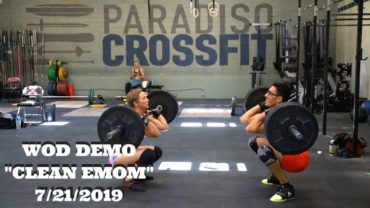Functional Movement Screen, Part2
Weekly Programming Links: Group Class, Venice Barbell Club, Track Night, Gymnastics Club
Monday, June 9, 2014
Prehab
Ankle Mobility
Banded Hip Extension
PVC Dislocates
Warmup
5 Pushups
10 Squats
Foam Roll Quads/Hip Flexors, 2 min
Foam Roll Glutes/Hamstrings, 2 min
Foam Roll Calves, 2 min
5 Pushups
10 Squats
Classic Strength
Back Squat 3×5- Rest 90 seconds
Press 3×5- Rest 90 seconds
Notes: Spend a few minutes working up to a challenging weight. May increase load each set.
Advanced Strength
Wendler Cycle 2, Week 4
Back Squat: 40% x 5, 50% x 5, 60% x 5
Press: 40% x 5, 50% x 5, 60% x 5
Notes: Percentages are based off 90% of adjusted 1 RM. This is a deload week, weight should feel light and easy. Perform a few warm up sets before getting into your working sets. Keep rest intervals around 2 minutes.
Classic Conditioning
30 Kettlebell Swings
15 Burpees
24 Kettlebell Swings
12 Burpees
18 Kettlebell Swings
9 Burpees
Advanced Conditioning
15-12-9 reps of:
Hang Squat Cleans (135/95)
Burpees
Cool Down
Quad on the Wall
German Stretch
Last week in Part 1 I introduced the FMS screen and used their Performance Pyramid to highlight the order of adopting new movements in our gym: Mechanics, Consistency, Intensity.
This week I want to highlight the order in which FMS corrects faulty movement patterns. The goal of the FMS screen is to quickly identify pain or faulty movement patterns.
If there is any pain, then step one is to get it looked at and worked on by a professional before anything else. Now let’s assume you are pain free but the screen has exposed a faulty movement pattern.
Just as there is an order to learning a new skill, there is a similar order of progression for correcting movement patterns: first you address mobility, then you develop static and dynamic stability, and last you reprogram the movement.
Mobility is always addressed first because adequate stability cannot be present with reduced mobility. Quality stability is driven by quality proprioception (information and awareness about your body’s position and movement), which is not possible with limitations in mobility. Finally, with new mobility and proper stability to control that new range of motion safely and effectively, you are now able to reprogram the movement pattern. It should no longer be dysfunctional and safe to add load or intensity.
To review, the complete cycle from start to finish of FMS goes as follows:
- Identify any pain or dysfunctional movement patterns using the FMS Screen
- Address Mobility
- Gain Static Motor Control
- Gain Dynamic Motor Control
- Reprogram the Movement Pattern
- Add Strength or Intensity
I am going on vacation starting next Sunday but trying to screen as many people as possible before then to test and refine the above cycle. Please message me on Facebook or email me at frank@paradisocrossfit.com to set up a free appointment this week at MDR. The screen takes about 15 minutes and is super simple. Rebecca Cooperman was my first test subject and passed with flying colors!
















